Sancho Salcedo-Sanz
AI for Extreme Event Modeling and Understanding: Methodologies and Challenges
Jun 28, 2024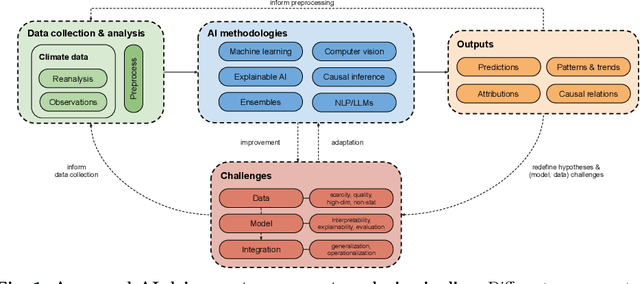

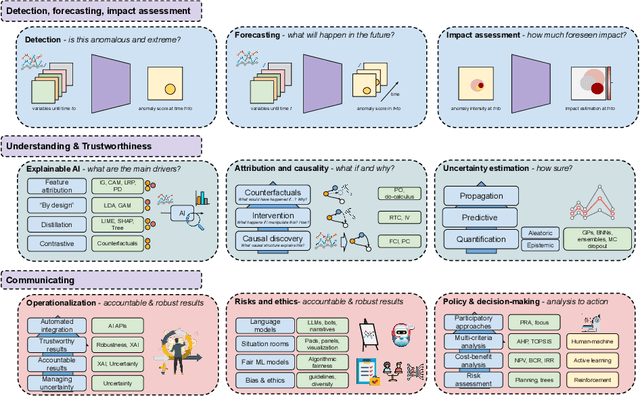

Abstract:In recent years, artificial intelligence (AI) has deeply impacted various fields, including Earth system sciences. Here, AI improved weather forecasting, model emulation, parameter estimation, and the prediction of extreme events. However, the latter comes with specific challenges, such as developing accurate predictors from noisy, heterogeneous and limited annotated data. This paper reviews how AI is being used to analyze extreme events (like floods, droughts, wildfires and heatwaves), highlighting the importance of creating accurate, transparent, and reliable AI models. We discuss the hurdles of dealing with limited data, integrating information in real-time, deploying models, and making them understandable, all crucial for gaining the trust of stakeholders and meeting regulatory needs. We provide an overview of how AI can help identify and explain extreme events more effectively, improving disaster response and communication. We emphasize the need for collaboration across different fields to create AI solutions that are practical, understandable, and trustworthy for analyzing and predicting extreme events. Such collaborative efforts aim to enhance disaster readiness and disaster risk reduction.
A comprehensive review of visualization methods for association rule mining: Taxonomy, Challenges, Open problems and Future ideas
Feb 24, 2023Abstract:Association rule mining is intended for searching for the relationships between attributes in transaction databases. The whole process of rule discovery is very complex, and involves pre-processing techniques, a rule mining step, and post-processing, in which visualization is carried out. Visualization of discovered association rules is an essential step within the whole association rule mining pipeline, to enhance the understanding of users on the results of rule mining. Several association rule mining and visualization methods have been developed during the past decades. This review paper aims to create a literature review, identify the main techniques published in peer-reviewed literature, examine each method's main features, and present the main applications in the field. Defining the future steps of this research area is another goal of this review paper.
Time series numerical association rule mining variants in smart agriculture
Dec 07, 2022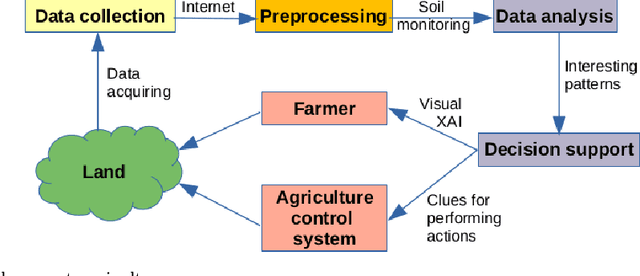



Abstract:Numerical association rule mining offers a very efficient way of mining association rules, where algorithms can operate directly with categorical and numerical attributes. These methods are suitable for mining different transaction databases, where data are entered sequentially. However, little attention has been paid to the time series numerical association rule mining, which offers a new technique for extracting association rules from time series data. This paper presents a new algorithmic method for time series numerical association rule mining and its application in smart agriculture. We offer a concept of a hardware environment for monitoring plant parameters and a novel data mining method with practical experiments. The practical experiments showed the method's potential and opened the door for further extension.
New Probabilistic-Dynamic Multi-Method Ensembles for Optimization based on the CRO-SL
Dec 02, 2022Abstract:In this paper we propose new probabilistic and dynamic (adaptive) strategies to create multi-method ensembles based on the Coral Reefs Optimization with Substrate Layers (CRO-SL) algorithm. The CRO-SL is an evolutionary-based ensemble approach, able to combine different search procedures within a single population. In this work we discuss two different probabilistic strategies to improve the algorithm. First, we defined the Probabilistic CRO-SL (PCRO-SL), which substitutes the substrates in the CRO-SL population by {\em tags} associated with each individual. Each tag represents a different operator which will modify the individual in the reproduction phase. In each generation of the algorithm, the tags are randomly assigned to the individuals with a similar probability, obtaining this way an ensemble with a more intense change in the application of different operators to a given individual than the original CRO-SL. The second strategy discussed in this paper is the Dynamical Probabilistic CRO-SL (DPCRO-SL), in which the probability of tag assignment is modified during the evolution of the algorithm, depending on the quality of the solutions generated in each substrate. Thus, the best substrates in the search process will be assigned with a higher probability that those which showed a worse performance during the search. We test the performance of the proposed probabilistic and dynamic ensembles in different optimization problems, including benchmark functions and a real application of wind turbines layout optimization, comparing the results obtained with that of existing algorithms in the literature.
Accurate Long-term Air Temperature Prediction with a Fusion of Artificial Intelligence and Data Reduction Techniques
Sep 29, 2022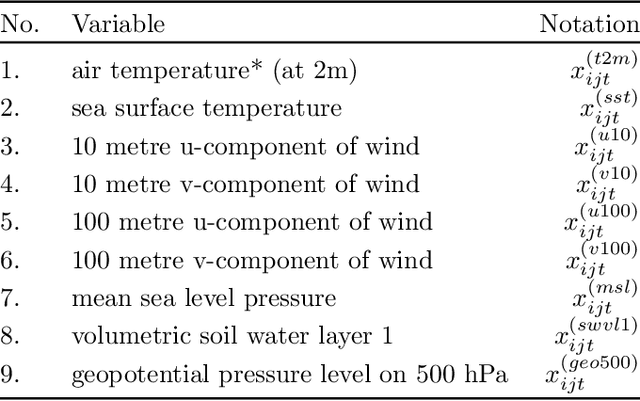
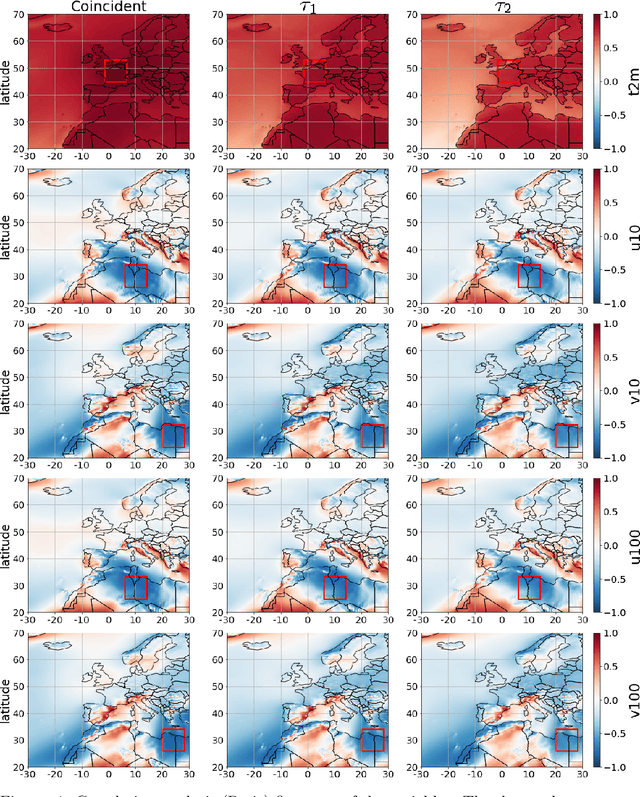
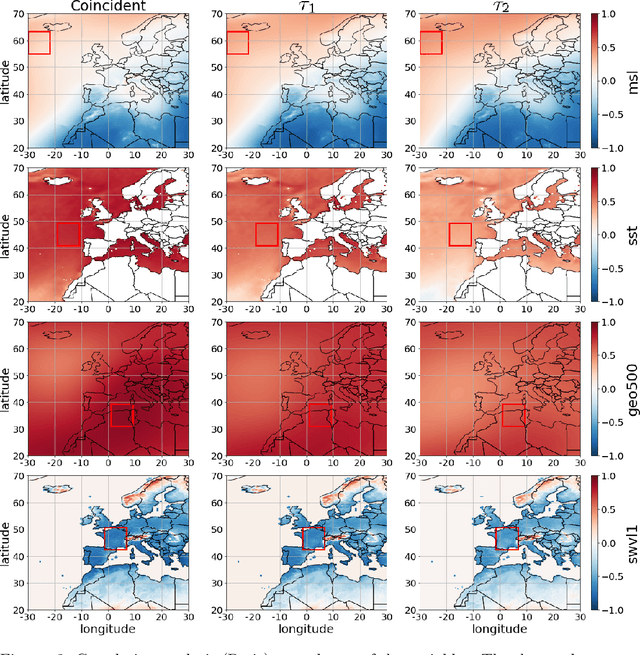
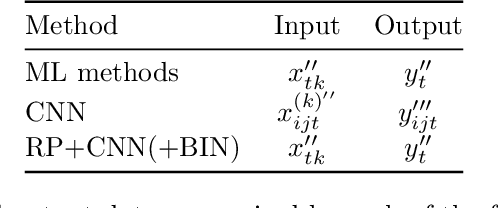
Abstract:In this paper three customised Artificial Intelligence (AI) frameworks, considering Deep Learning (convolutional neural networks), Machine Learning algorithms and data reduction techniques are proposed, for a problem of long-term summer air temperature prediction. Specifically, the prediction of average air temperature in the first and second August fortnights, using input data from previous months, at two different locations, Paris (France) and C\'ordoba (Spain), is considered. The target variable, mainly in the first August fortnight, can contain signals of extreme events such as heatwaves, like the mega-heatwave of 2003, which affected France and the Iberian Peninsula. Thus, an accurate prediction of long-term air temperature may be valuable also for different problems related to climate change, such as attribution of extreme events, and in other problems related to renewable energy. The analysis carried out this work is based on Reanalysis data, which are first processed by a correlation analysis among different prediction variables and the target (average air temperature in August first and second fortnights). An area with the largest correlation is located, and the variables within, after a feature selection process, are the input of different deep learning and ML algorithms. The experiments carried out show a very good prediction skill in the three proposed AI frameworks, both in Paris and C\'ordoba regions.
Randomization-based Machine Learning in Renewable Energy Prediction Problems: Critical Literature Review, New Results and Perspectives
Mar 26, 2021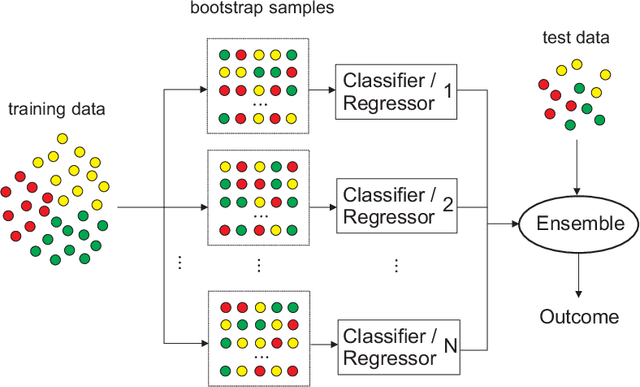

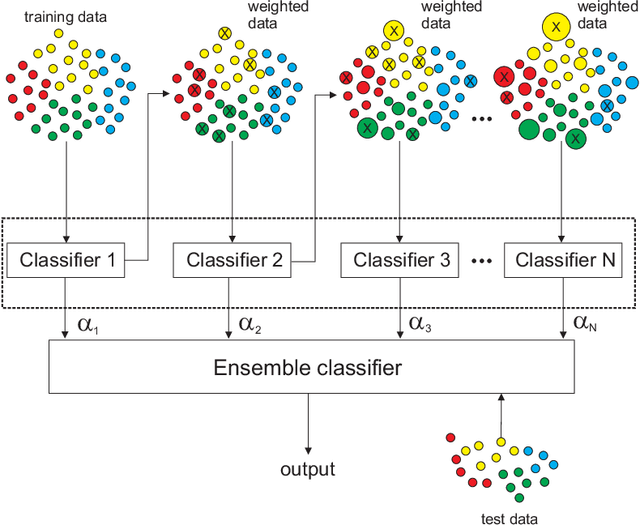
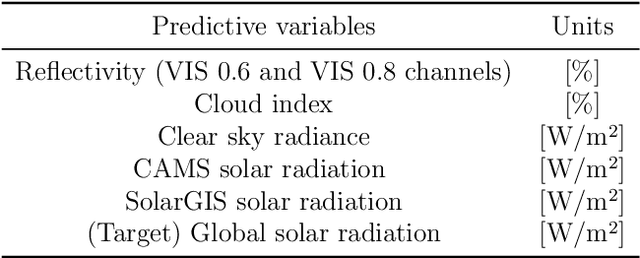
Abstract:Randomization-based Machine Learning methods for prediction are currently a hot topic in Artificial Intelligence, due to their excellent performance in many prediction problems, with a bounded computation time. The application of randomization-based approaches to renewable energy prediction problems has been massive in the last few years, including many different types of randomization-based approaches, their hybridization with other techniques and also the description of new versions of classical randomization-based algorithms, including deep and ensemble approaches. In this paper we review the most important characteristics of randomization-based machine learning approaches and their application to renewable energy prediction problems. We describe the most important methods and algorithms of this family of modeling methods, and perform a critical literature review, examining prediction problems related to solar, wind, marine/ocean and hydro-power renewable sources. We support our critical analysis with an extensive experimental study, comprising real-world problems related to solar, wind and hydro-power energy, where randomization-based algorithms are found to achieve superior results at a significantly lower computational cost than other modeling counterparts. We end our survey with a prospect of the most important challenges and research directions that remain open this field, along with an outlook motivating further research efforts in this exciting research field.
A mixture of experts model for predicting persistent weather patterns
Mar 24, 2019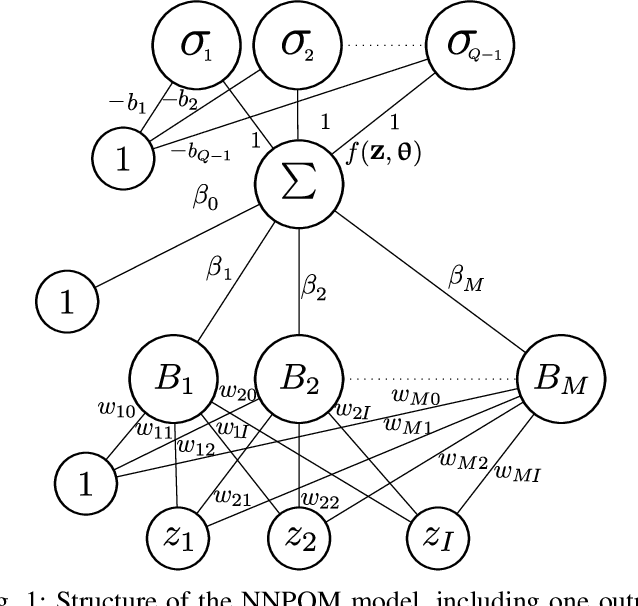
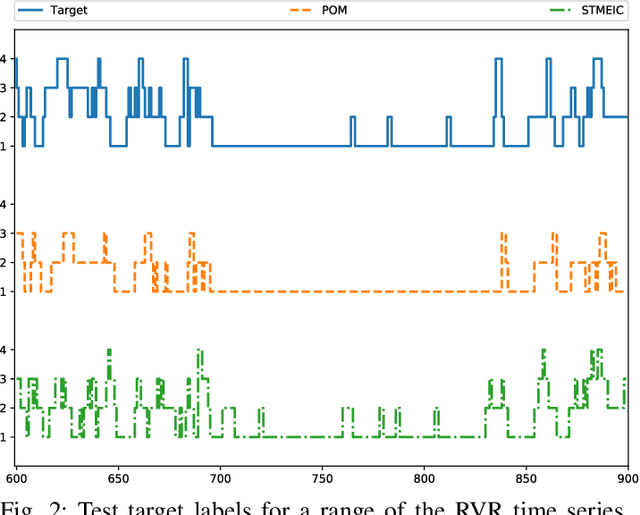
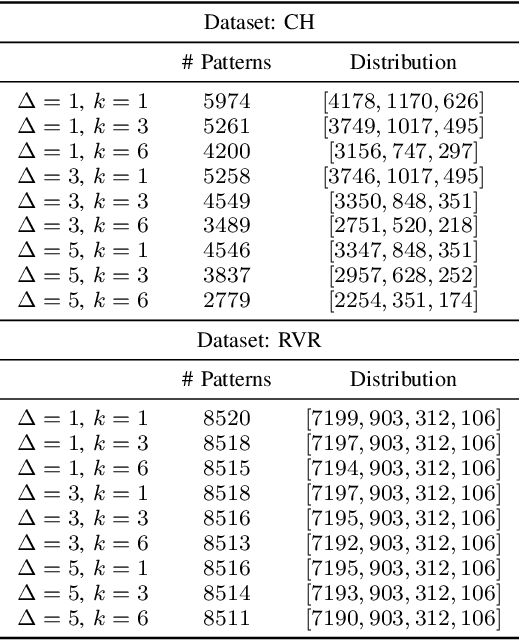
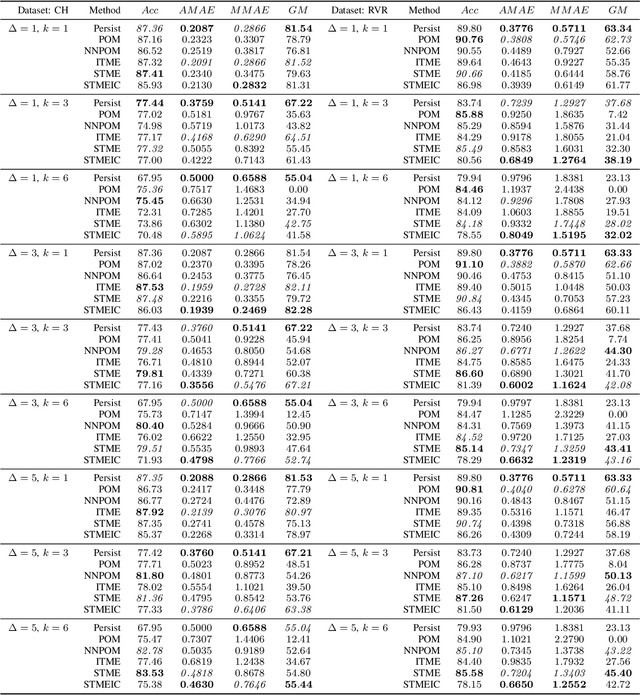
Abstract:Weather and atmospheric patterns are often persistent. The simplest weather forecasting method is the so-called persistence model, which assumes that the future state of a system will be similar (or equal) to the present state. Machine learning (ML) models are widely used in different weather forecasting applications, but they need to be compared to the persistence model to analyse whether they provide a competitive solution to the problem at hand. In this paper, we devise a new model for predicting low-visibility in airports using the concepts of mixture of experts. Visibility level is coded as two different ordered categorical variables: cloud height and runway visual height. The underlying system in this application is stagnant approximately in 90% of the cases, and standard ML models fail to improve on the performance of the persistence model. Because of this, instead of trying to simply beat the persistence model using ML, we use this persistence as a baseline and learn an ordinal neural network model that refines its results by focusing on learning weather fluctuations. The results show that the proposal outperforms persistence and other ordinal autoregressive models, especially for longer time horizon predictions and for the runway visual height variable.
 Add to Chrome
Add to Chrome Add to Firefox
Add to Firefox Add to Edge
Add to Edge